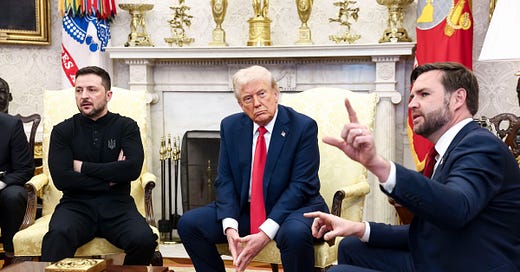
If the Royal Navy is not big enough to protect British shipping in the Gulf, what use is it? If Iran can seize a British tanker and pour scorn on our impotence, why should we believe that, post-Brexit, we can once again rule the waves?
These are among the key questions that will find their way into Boris Johnson’s already-bulging in-tray when he takes over on Wednesday as prime minister and, more to the point, as First Lord of the Treasury.
Will he listen to the admirals and commit to a dozen new escort vessels (with launch dates extending over the next decade or more), or will he – having glanced at the figures – resort to bluster and talk in suitably Churchillian tones of the need to fall in behind our American allies?
Those of you who know your history will be aware that it was the Royal Navy that down the centuries frequently decided the course of events. The defeat of the Armada; Nelson’s victories at Trafalgar and the Nile; the Battle of Jutland; the sinking of the Bismarck; the destruction of the Italian navy from the air at Taranto; the triumphant task force that sailed 8,000 miles to dislodge the Argentinians from their occupation of the Falklands.
But they will also know that, to borrow from The Duke of Wellington, Britain’s supremacy at sea was often a close-run thing. We have always needed enough men, money and ships to ensure our survival in times of crisis, and it is these that today are in the shortest of short supply.
At the outbreak of war in 1939, the Navy boasted seven aircraft carriers, 15 battleships, 66 cruisers, 184 destroyers, 45 other escorts and 60 submarines. Another 103 ships were under construction.
Today, the roster stands at 74: two aircraft carriers (yet to enter service), two amphibious warfare ships, six guided missile destroyers, 13 frigates (most of them on their last sealegs), four ballistic missile submarines (useless in any conflict short of Armageddon), six attack submarines and a variety of specialist vessels, including minehunters and an icebreaker. Only 33 of the total could be described as fighting ships.
It is not enough. As Tobias Ellwood, at the time of writing still a minister of state at the MoD, said on Sunday, the Royal Navy is simply too small to fill a global role. We are all mouth and no ships.
The US Navy currently has 282 combat vessels, including 11 nuclear-powered aircraft carriers, literally dozens of assault ships and more than a hundred cruisers and destroyers, plus a massive submarine fleet. The 3,700 aircraft it can muster comprise the world’s third-largest air force, after the USAF and the US Army.
No one is suggesting that the British Navy should be even remotely comparable to that of the United States. Britain in 2019 is at base a European regional power, with legacy issues. If we were to look for more suitable comparisons, France, Germany, Italy, Canada, perhaps even Russia, spring to mind. And of these, only France actually stands up to scrutiny. The rest are either faded (Russia) or insufficient, with a handful of decent ships disguising the fact that each of their fleets has been steadily run down ever since it was decided that with the fall of the Soviet Union history had ended.
But none of these nations, other than France, has any pretence to be a global seapower. Russia under Vladimir Putin has latterly begun to rebuild its rusty fleet, but is at least a decade away from presenting itself as a plausible counterweight to America. It is the Chinese, bent on the domination of world trade, we should be wary of, with India as the next biggest candidate, albeit, for now, on our side.
But leaving aside the possibility of global conflict, in which Britain, regardless of the size of its defence budget, would play only an ancillary role as sidekick to the Americans, there is the day-to-day deficiency in numbers that has the Navy running around simply to stand still. It is this that has been cruelly exposed by the situation in the Persian Gulf.
As it stands, Britain currently has one ship, HMS Montrose, a 25-year-old Type 23 frigate, on station in the straits of Hormuz. A second vessel, the Type 45 destroyer HMS Duncan, is on its way, as, we are told, is a second frigate, HMS Kent. But lest you think that three ships should be enough to deter further aggression, one is likely to return home and another is scheduled for maintenance. The Duncan, meanwhile, represents something of a gamble. Although a formidable fighting ship, among the most advanced in the world, its engines, like those of its five sister ships, are liable to fail in temperatures typically found in the Gulf. Imagine the humiliation if it ended up dead in the water, surrounded by the angry little boats of the Iranian Revolutionary Guard.
Back in Westminster, the buck is already being passed. Ministers and others on the government side are warning of the need to “lower the temperature” (if only), in the hope that ships not realistically available need not in fact be sent. Diplomacy, they say, is the way forward, as if diplomacy had not been tried with Iran over the last 25 years and as if diplomacy was what was uppermost when Royal Marines seized an Iranian tanker off Gibraltar in the belief that it was carrying fuel to Syria in contravention of EU sanctions.
Looking ahead – six weeks if not six years – it is being suggested that western-owned tankers bound for the Straits of Hormuz should proceed in convoy, protected by a mix of naval ships provided by, most obviously, the US and France as well as Britain. But ship owners are said to be resisting, argung that they cannot be expected to give the 12-24 hours notice of movement that would enable a convoy to be formed.
The situation is embarrassing as it stands, but could easily get worse. One of the proudest boasts of the Tory Government since 2016 is that, post-Brexit, Britain will be Europe’s most dependable bulwark when it comes to questions of defence and security. Britain, we were told, had the biggest military capability of any continental power and would use that power as proof that when push comes to shove, the UK is the partner you can trust.
The reality is that our armed forces have been cut to the bone by every single administration since that of Margaret Thatcher.
Our two new aircraft carriers, HMS Queen Elizabeth and HMS Prince of Wales, commmissioned in a fit of absence of mind by Tony Blair, have virtually no defensive capability and cannot launch fixed-wing early warning aircraft. Though they are each capable of sustaining 38 or more F35b fighters, it is expected that only a dozen or so will actually be deployed.
The six Type 45 destroyers – of which there were originally to have been 12 – are all but one in port, awaiting new engines. Final decisions on the number of Type 26 frigate have yet to be taken (I’m guessing eight), and the cut-price Type 31s are as yet no more than a glint in the appropriate admiral’s eye.
In the meantime, Canada has announced that it will build 15 variants of the Type 26, while France has won an order to construct 12 new submarines for the Australian Navy. With just three orders so far confirmed for new escorts, the Royal Navy is starting to look like the Junior Service.
To rub marine salt in the Navy’s wounds, HMS Ocean, our only fully-equipped assault ship, was sold off last year to Brazil, and it is still not 100 per cent certain that the Prince of Wales, as well as our two remaining amphibious warfare ships, will not suffer the same fate.
Rule Brittania? I think not. Muddle Through Brittania seems by far the more likely shanty in the years ahead.









